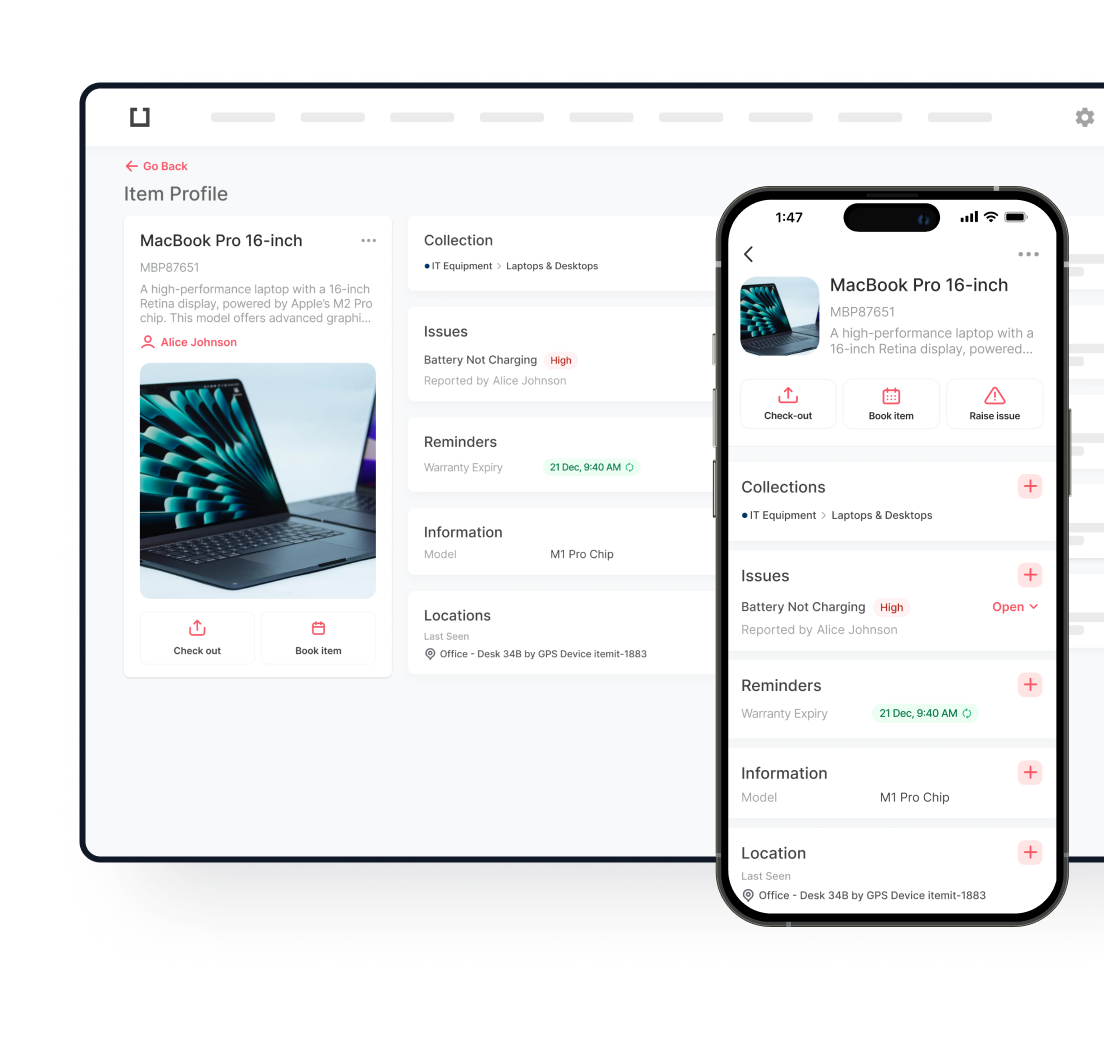
Beyond spreadsheets and clipboards lies a world where assets don’t just exist—they perform. Organisations today can’t afford to simply track what they own; they need resources that consistently deliver maximum value with minimum fuss. This shift from passive ownership to active optimisation has transformed how forward-thinking companies approach their physical and digital investments.
The Importance of Asset Performance Management
Gone are the days when organisations could afford to react to equipment failures after they happened. Modern business demands proactive oversight that prevents problems before they emerge.
Beyond Basic Maintenance
Asset performance management transforms traditional approaches by focusing on optimisation rather than simple upkeep. While conventional asset management might track location and maintenance schedules, APM digs deeper—analysing operational patterns, predicting potential issues, and identifying opportunities for improvement that might otherwise go unnoticed.
Think of it as the difference between a car owner who changes the oil every 5,000 miles like clockwork versus one who monitors engine performance, driving conditions, and oil quality to determine the perfect maintenance schedule for maximum engine life and performance.
Hidden Value Unlock
Organisations implementing robust asset performance management systems typically unlock several layers of value:
- Equipment lifespans stretch by 20-40%
- Maintenance costs drop by up to 25%
- Unplanned downtime shrinks by 15-30%
- Safety incidents decrease significantly
- Capital planning becomes data-driven rather than calendar-driven
Measurable Business Impact
The financial impact ripples throughout operations. What is asset performance management in business terms? It’s the difference between reactive spending and strategic investment. Companies with mature APM programs consistently outperform competitors through better resource allocation, more accurate forecasting, and fewer operational disruptions.
A manufacturing facility that implemented comprehensive asset management performance metrics discovered that its overall equipment effectiveness improved by 18% within six months, translating to millions in additional production capacity without any capital expenditure.
Compliance Without Headaches
For regulated industries, APM offers another crucial benefit: simplified compliance. Rather than scrambling to produce documentation during audits, organisations with mature performance asset management systems maintain continuous compliance through automated tracking, testing, and documentation.
Best Practices for Implementing Asset Performance Systems
Jumping headfirst into APM implementation often leads to disappointment. Organisations that successfully transform their asset management approach typically follow several proven principles that turn theoretical benefits into tangible results.
Start With Why, Not What
Before evaluating a single piece of asset performance management software, clarify exactly what problems you’re trying to solve. Are you fighting excessive downtime? Struggling with unpredictable maintenance costs? Drowning in compliance paperwork?
The most successful implementations begin with specific, measurable objectives rather than vague aspirations to “improve asset management.” A chemical processing plant aiming to reduce unplanned downtime by 30% will choose very different implementation strategies compared to a hospital prioritizing regulatory compliance.
Organisations that skip this critical step often end up with sophisticated systems that solve problems they don’t have while missing their actual pain points. One transportation company spent $1.2 million on advanced vibration monitoring when its primary issue was poor inventory management of replacement parts—addressing the wrong problem with the wrong solution.
Map Your Asset Ecosystem
You can’t optimise what you don’t understand. Creating an accurate asset register forms the non-negotiable foundation of effective performance management. This goes beyond simple inventory to include:
- Criticality rankings (which assets directly impact operations)
- Interdependencies (how assets affect each other)
- Performance expectations and thresholds
- Maintenance histories and patterns
- Replacement costs and availability
- Environmental and operational context factors
This mapping process often uncovers surprising insights. A manufacturing facility discovered that its most expensive assets weren’t necessarily its most critical when measured by operational impact. Its $80,000 compressor shutdowns caused more production loss than failures of multi-million dollar processing equipment.

Prioritise for Maximum Impact
Not all assets deserve equal attention. The Pareto principle typically applies—roughly 20% of your assets likely drive 80% of your maintenance costs, downtime incidents, or compliance issues.
Start your implementation with these high-impact assets to:
- Demonstrate value quickly
- Build organisational momentum
- Generate resources for expanding the program
- Refine approaches before broader rollout
A utility company took this approach by focusing first on critical substation transformers, capturing enough savings in the first six months to fund the expansion of their asset performance management system to secondary distribution equipment.
Choose Tools That Fit Your Reality
The market overflows with asset performance management software options, but the best solution depends entirely on your specific needs. Consider:
- Integration capabilities with existing systems
- Scalability as your asset base grows
- Mobile functionality for field teams
- Analytics sophistication that matches your data maturity
- Implementation requirements and timeline
- Total cost of ownership beyond initial purchase
- Vendor stability and support reputation
Organisations often stumble by selecting overly complex systems that promise everything but deliver frustration. Sometimes, a focused solution addressing your most pressing challenges beats a comprehensive platform that nobody fully utilises.
Before committing, talk to other users of the system you’re considering—preferably in your industry. Their real-world experience often reveals challenges that glossy sales presentations conveniently omit.
Build Cross-Functional Bridges
Successful asset performance optimisation requires breaking down traditional silos between operations, maintenance, engineering, finance, and IT. Create implementation teams that include representatives from each affected department.
This cross-functional approach ensures:
- Technical requirements align with operational realities
- Financial benefits receive proper recognition
- IT security and integration concerns get addressed early
- Change management considers all stakeholders
A healthcare system initially struggled with their implementation until they formed a dedicated “APM Excellence Team” with monthly cross-departmental meetings, resulting in 40% greater adoption and significantly improved outcomes.
Bring People Along
Even the most sophisticated system fails without user adoption. Frontline maintenance teams, operations personnel, and management all need different types of engagement:
- Hands-on training tailored to specific roles and learning styles
- Clear explanation of personal benefits (“what’s in it for me”)
- Early wins that demonstrate immediate value
- Ongoing support during the transition
- Recognition for adoption and improvement suggestions
- Regular feedback sessions to address pain points
A manufacturing company implemented cutting-edge monitoring technology only to discover that maintenance technicians had developed workarounds because they weren’t involved in the selection process and didn’t trust the new system’s recommendations. Their subsequent implementation included maintenance techs in the selection committee and achieved 94% adoption rates.
Start Small, Think Big
Successful implementations typically begin with pilot projects that demonstrate value before expanding. This approach:
- Reduces initial investment risk
- Provides proof-of-concept results
- Allows refinement of implementation approaches
- Builds internal champions through early successes
A food and beverage producer started with a single production line, perfected its approach, and then expanded to 32 facilities over three years—achieving consistent results that would have been impossible with a rushed enterprise-wide rollout.
Measure, Adjust, Repeat
Implementing an asset performance management system marks the beginning—not the end—of optimisation. Establish clear performance metrics, regularly review results, and continuously refine your approach based on actual outcomes.
Organisations demonstrating Asset Management Compliance excellence typically establish formal governance structures that regularly evaluate system performance against established metrics, identify improvement opportunities, and implement necessary adjustments.
The most successful organisations create a dedicated improvement cycle:
- Monthly performance review meetings
- Quarterly strategy adjustments
- Annual comprehensive program assessment
- Continuous user feedback channels
This structured approach ensures your APM implementation evolves alongside changing business needs, emerging technologies, and accumulated performance insights.

Leveraging Predictive Maintenance Tools
The transition from reactive to predictive maintenance represents perhaps the most significant opportunity within modern asset management. Rather than waiting for failures or performing maintenance on arbitrary schedules, organisations can now intervene at precisely the right moment.
Seeing Around Corners
Predictive analytics within asset performance management uses multiple data streams to forecast potential issues before they cause operational disruption:
- Real-time performance data
- Historical maintenance patterns
- Environmental conditions
- Manufacturer specifications
- Similar asset performance across the organisation
A power generation facility implemented vibration analysis combined with machine learning algorithms. It reduced unexpected turbine failures by 87% in the first year—avoiding millions in emergency repair costs and lost production.
Beyond Guesswork
Traditional maintenance approaches inevitably waste resources—either through unnecessary preventive maintenance or through costly emergency repairs. Predictive tools within comprehensive asset performance optimisation systems enable precisely targeted interventions:
- Only replace components approaching actual failure
- Schedule maintenance during planned downtime
- Order parts just before they’re needed
- Deploy resources based on actual conditions rather than calendar dates
From Data To Decisions
Perhaps most valuable, predictive maintenance transforms how organisations make capital planning decisions. Rather than replacing equipment based on arbitrary age milestones, companies can:
- Extend useful life of well-performing assets
- Identify design or operational issues causing premature failures
- Target replacement investments more precisely
- Reduce capital expenditure without increasing operational risk
A hospital network implementing predictive maintenance within their asset performance management software realised they could safely defer $4.2 million in planned equipment replacements while actually improving reliability and performance.
Enhancing Efficiency through Real-Time Asset Monitoring
The gap between daily inspection and continuous awareness represents enormous untapped potential. Real-time monitoring transforms reactive management into proactive optimisation.
The Continuous Awareness Advantage
Traditional asset performance management approaches relied on periodic inspections and assessments—creating inevitable blind spots. Modern continuous monitoring eliminates these knowledge gaps through:
- Constant parameter tracking
- Immediate detection of abnormal conditions
- Pattern recognition across time
- Automatic alert generation
- Early intervention opportunities
A food processing facility implementing real-time temperature monitoring discovered subtle equipment performance patterns that, when addressed, reduced energy consumption by 14% while extending equipment life.
Technology Convergence Creates Possibilities
Several technological developments have made comprehensive monitoring both practical and affordable:
- Inexpensive IoT sensors can now track virtually any physical parameter
- Edge computing enables local processing without massive data transmission
- Cloud infrastructure scales to accommodate enterprise-wide monitoring
- Advanced analytics detect subtle patterns that human observers would miss
- Mobile interfaces bring insights to anyone who needs them, anywhere
These technologies combine to transform how organisations approach performance asset management—shifting from occasional assessment to continuous optimisation.
Real Business Impact
Organisations implementing real-time monitoring as part of their asset performance management system typically report:
- 25-45% reduction in unplanned downtime
- 10-20% decrease in maintenance costs
- 5-15% improvement in energy efficiency
- Significant extension of asset useful life
- Enhanced safety through early detection of hazardous conditions
A manufacturing facility that implemented comprehensive monitoring discovered that subtle pressure variations in their pneumatic systems—too small for operators to notice—were causing microscopic product defects that cost millions annually in warranty claims.
Transform Your Asset Performance Today
The gap between average and exceptional asset performance often comes down to approach rather than investment. Organisations already own the assets—they simply need the tools and methodologies to maximise their value.
itemit provides comprehensive solutions that transform asset management from a necessary expense into a strategic advantage. Our platform addresses every aspect of the optimisation journey, from establishing baseline visibility to implementing sophisticated predictive analytics.
Unlike generic enterprise software, our solutions specifically address the unique challenges of asset performance management:
- Rapid implementation without extensive IT resources
- Intuitive interfaces that maintenance teams actually want to use
- Flexible deployment options (cloud, on-premise, or hybrid)
- Progressive implementation paths that deliver value at each stage
See how itemit can transform your approach to asset performance:
- Request a personalised demonstration tailored to your industry challenges
- Download our comprehensive guide: “Asset Performance Transformation: A Step-by-Step Roadmap”
- Connect with our experts to discuss your specific asset management goals
Organisations working with itemit typically see measurable performance improvements within 90 days of implementation. Reach out today to begin your journey toward asset performance excellence.

Try itemit
Choose a better way to track
your assets.
Start your free 14-day trial now!

Keep Learning
itemit Blog
Tips, guides, industry best practices, and news.
What Is Active RFID? A Complete Guide to Smart RFID Tags
Discover what Active RFID is, how active tags function, and the key benefits and use cases that make this technology essential for modern tracking systems.
Everything You Need to Know About 2D Barcodes
Discover everything about 2D barcodes, including how they work, their benefits, and how they are revolutionizing industries and improving business operations
Complete Guide to Asset Lifecycle Management and Its Benefits
Learn about asset lifecycle management and how it helps businesses optimize asset usage, reduce costs, and improve efficiency throughout the asset’s life.



